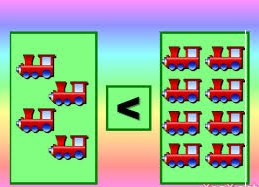Once students have learned cardinal numbers, you'll ought to introduce ordinal numbers still. This lesson shouldn't directly follow the one on cardinal numbers as a result of students would like plentyof apply with those before being introduced to the current topic but they're each beginner lessons andper se can presumably fall inside identical year.
Warm up
 Use the nice and cozy up activity to induce students brooding about cardinal numbers particularly ifit's been a protracted time since you last practiced them. you'll try this by victimization decks ofvariety cards to play games like Memory or cards in tiny teams or by taking part in a game like beanoas a category. To review a lot of vocabulary, you'll compose a story as a category instead. you'llbegin by spoken language “I visited the shop and purchased one cat.” as an example,
Use the nice and cozy up activity to induce students brooding about cardinal numbers particularly ifit's been a protracted time since you last practiced them. you'll try this by victimization decks ofvariety cards to play games like Memory or cards in tiny teams or by taking part in a game like beanoas a category. To review a lot of vocabulary, you'll compose a story as a category instead. you'llbegin by spoken language “I visited the shop and purchased one cat.” as an example, havesucceeding student repeat your sentence and so add “and 2 ~.” and continue on till
everybody has contributed.
Introduction:
Since ordinal numbers don't have anything to try to to with quantity however rather with position,don't set out by victimization numbers however instead use pictures of alternative vocabulary words to simulate a race on the board. you'll speak along with your students regarding the positions of every item by spoken language as an example “The dog is 1st and also the cat is second.” Begin withsimply a couple of words or pictures on the board and work your high to provide students applyvictimization the primary 10 ordinal numbers. Introduce the word ‘last’ still since this can be a gripconnected vocabulary word.
Practice
 Using identical variety cards as within the heat up activity, students will play games to apply these new words. Memory would be nice for pronunciation apply as long as each student says the right no. aloud once he turns over a card. If students can not be inspired to truly say the words aloud, you will still advance to a different activity. to provide students a lot of speaking apply, you'll give them with a model dialogue or AN interview activity.The model dialogue may specialise in a picture on the board wherever students act asking the position of varied things and responding to queries. AN interview activity may embrace queries like “What’s the primary issue area unit doing} within the morning?” or “What’s the primary issue you are doing once school?” Your students’ vary of vocabulary can facilitate verify what queries are acceptable. try and embrace a spread of antecedently studied material still as completely different ordinal numbers albeit 1st is maybe the foremost unremarkably used.
Using identical variety cards as within the heat up activity, students will play games to apply these new words. Memory would be nice for pronunciation apply as long as each student says the right no. aloud once he turns over a card. If students can not be inspired to truly say the words aloud, you will still advance to a different activity. to provide students a lot of speaking apply, you'll give them with a model dialogue or AN interview activity.The model dialogue may specialise in a picture on the board wherever students act asking the position of varied things and responding to queries. AN interview activity may embrace queries like “What’s the primary issue area unit doing} within the morning?” or “What’s the primary issue you are doing once school?” Your students’ vary of vocabulary can facilitate verify what queries are acceptable. try and embrace a spread of antecedently studied material still as completely different ordinal numbers albeit 1st is maybe the foremost unremarkably used. Challenge
ChallengeIf your students do well, you'll say the pattern of forming ordinal numbers. ensure that students
understand that apart from eleventh, twelfth, and thirteenth, numbers ending with one, two, or 3 ar irregular and will be aforesaid 1st, second, and third severally. you ought to conjointly explore all multiples of 10 from twentieth through ninetieth as a result of these ar pronounced slightly otherwise from alternative ordinal numbers. like cardinal numbers students might confuse words like thirteenth andthirtieth thus these might need a spherical of beano of their own for further apply.





















